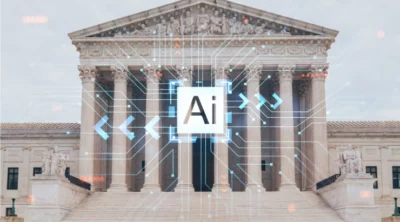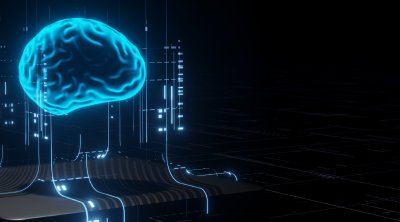MLE-Maximum Likelihood Estimation: Simplified in 3 Points
Introduction
Density assessment is the issue of assessing the likelihood appropriation for example of perceptions from a difficult area. There are numerous methods for tackling density assessment, although a typical structure utilized all through the field of AI is maximum likelihood assessment. Maximum likelihood estimation(MLE) includes characterizing a probability work for computing the restrictive likelihood of noticing the information test given a likelihood of dissemination and conveyance boundaries. This adaptable probabilistic structure additionally gives the establishment too many AI calculations, including significant strategies, for example, linear and logistic regression for anticipating numeric qualities and class names separately.
In this article let us look at:
- The Problem of Probability Density Estimation
- Maximum Likelihood Estimation(MLE)
- Relationship to Machine Learning
1. The problem of probability Density Estimation
A typical modelling problem includes how to appraise a joint probability assessment for a dataset.
For instance, given an example of perception (X) from a space (x1, x2, … , xn), where every perception is drawn autonomously from the area with a similar probability distribution (alleged free and indistinguishably conveyed, i.i.d., or near to it).
Probability Density estimation includes choosing a likelihood probability work and the boundaries of that appropriation that best clarify the joint probability circulation of the noticed information (X).
- How would you pick the probability distribution work?
- How would you pick the boundaries for the probability distribution work?
This issue is made more challenging as test (X) drawn from the population is little and has clamour, implying that any assessment of an expected likelihood density capacity and its boundaries will also have some blunder.
There are numerous strategies for taking care of this issue, although two regular methodologies are:
- Maximum a Posteriori (MAP), a Bayesian technique.
- Maximum likelihood estimation (MLE), frequentist technique.
The fundamental distinction is that Maximum likelihood estimation expects that all arrangements are similarly likely in advance, though Guide permits earlier data about the type of the answer to be bridled.
2. Maximum Likelihood Estimation(MLE)
One answer for probability density assessment is alluded to as maximum likelihood estimation, or MLE for short.
Maximum likelihood estimation includes regarding the issue as an enhancement or search issue, where we look for a bunch of boundaries that outcomes in the best fit for the joint likelihood of the information test (X).
To start with, it includes characterizing a boundary considered theta that characterizes both the decision of the probability density function and the boundaries of that dispersion. It very well might be a vector of mathematical qualities whose qualities change easily and guide to various probability distribution and their boundaries.
In maximum likelihood estimation, we like to boost the likelihood of noticing the information from the joint probability circulation given a particular probability assessment and its boundaries, expressed officially as:
P(X | theta)
This restrictive likelihood is regularly expressed utilizing the semicolon (;) like notation rather than the bar notation (|) on the grounds that theta is certainly not an arbitrary variable, however rather an obscure boundary. For instance:
- P(X ; theta)
or on the other hand
- P (X1, X2, … , Xn ; theta)
This subsequent contingent likelihood is alluded to as the probability of noticing the information given the model boundaries and composed utilizing the documentation K () to indicate the likelihood function. For example:
- K(X ; theta)
The target of Maximum likelihood estimation is to track down the arrangement of boundaries (theta) that expand the likelihood function, for example bring about the biggest probability esteem.
- maximise K (X ; theta)
We can unload the contingent likelihood determined by the likelihood function.
Given that the example is of n models, we can outline this as the joint likelihood of the noticed information tests X1, X2, … , Xn in X given the probability distribution boundaries (theta).
- K(X1, X2, … , Xn ; theta)
The joint probability circulation can be repeated as the duplication of the restrictive likelihood for noticing every model given the conveyance boundaries.
- product I to n P (Xi ; theta)
Multiplying numerous little probabilities together can be mathematically shaky practically speaking, hence, it isn’t unexpected to rehash this issue as the amount of the log contingent probabilities of noticing every example given the model boundaries.
- sum I to n log (P (Xi ; theta))
Where log with base-e called the characteristic logarithm is ordinarily utilized.
3. Relationship to Machine Learning
This issue of density estimation is straightforwardly identified with applied AI.
We can outline the issue of fitting a machine learning model as the issue of probability density estimation. In particular, the decision of model and model boundaries is alluded to as a demonstrating speculation g and the issue includes discovering h that best clarifies the data X.
- P (X ; g)
We can, in this manner, discover the demonstrating speculation that augments the likelihood function.
- maximise L (X ; g)
Or on the other hand, more completely:
- maximize sum I to n log (P (xi ; g))
This gives the premise to assessing the likelihood thickness of a dataset, commonly utilized in unaided machine learning calculations; for instance:
- Clustering algorithms
Truth be told, most MLE models can be outlined under the maximum likelihood assessment structure, giving a valuable and steady approach to move toward prescient displaying as a streamlining issue.
Conclusion
- MLE is a probabilistic structure for taking care of the issue of density estimation.
- It includes amplifying a likelihood function to discover the probability circulation and boundaries that best clarify the noticed information.
- It gives a system to prescient demonstrating in machine learning where discovering model boundaries can be outlined as an enhancement issue.
There are no right or wrong ways of learning AI and ML technologies – the more, the better! These valuable resources can be the starting point for your journey on how to learn Artificial Intelligence and Machine Learning. Do pursuing AI and ML interest you? If you want to step into the world of emerging tech, you can accelerate your career with this Machine Learning And AI Courses by Jigsaw Academy.
ALSO READ














